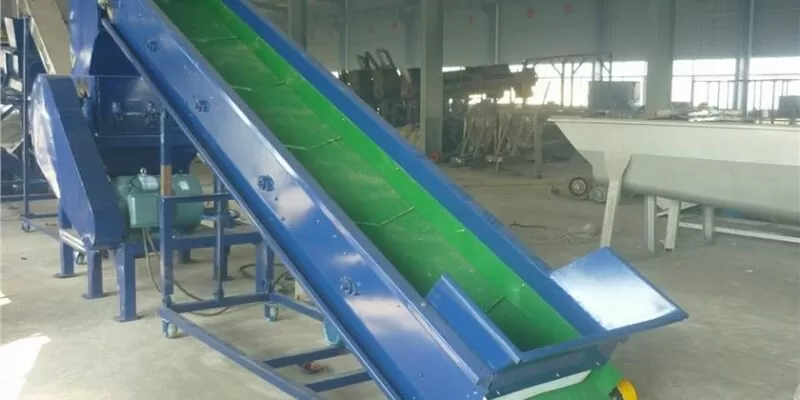We’ve all seen it: a beautiful plastic washing line installed in a recycling plant… and yet, somehow, the output flakes still come out inconsistent, or worse—dirty. It’s frustrating, right? I’ve been there myself. The machines are fine, the water’s running, but something feels “off.” The truth is, a washing line is only as good as how it’s operated. And trust me, optimizing it is more art than science.
In short, to use a plastic washing line better, focus on three things: feeding consistency, water management, and smart maintenance. Regular monitoring of temperature, contamination levels, and drying efficiency can improve output quality by over 25%.
Every washing line tells a story. Mine usually starts with noise, vibration, and a bit of chaos before order and efficiency finally settle in. Let’s make sure your story ends with crystal-clear plastic flakes.

What does “using it better” actually mean?
Using a plastic washing line better isn’t just about running it faster. It’s about making the process cleaner, leaner, and smarter. The goal is to maximize efficiency and minimize waste.
To me, “better use” means your PET or HDPE flakes come out cleaner, your energy bills are lower, and your operators stop calling you every hour with breakdowns. It’s a mix of technical optimization and disciplined operation.
For example, even a small mistake like feeding inconsistent plastic sizes can reduce washing efficiency by 18% (PE PP Film Recycling Machine). That’s why we need a systematic approach.
Why feeding consistency matters?
In plastic washing lines, input is everything. Garbage in, garbage out—it’s that simple. If you feed the line with mixed-size or unprepared materials, you’re forcing the system to work harder.
I once saw a client feed huge PP buckets together with thin PE films. The result? The friction washer overloaded, and the float-sink tank couldn’t separate properly. Not pretty.
To improve, pre-shred materials into even sizes before feeding. Use a reliable conveyor and regulate the feed rate. If the washing line is choking or underfed, the efficiency drops drastically.
How to manage water in the washing line?
Water is the lifeblood of the washing process. Too much water wastes energy. Too little water leads to poor cleaning.
The trick is balance. I monitor water turbidity and pH daily. When contamination rises, I recycle part of the water but ensure it passes through filtration and sedimentation tanks first.
Our setup uses a closed-loop system. It saves up to 35% water per shift (Plastic drum crusher equipped with washing line). But you can’t just install a filter and forget it—clean those filters weekly, or you’ll end up washing plastic with mud.
What about temperature and detergent control?
If you’re washing oil-contaminated plastics like HDPE or PP, temperature matters. The sweet spot is between 80–90°C. Anything higher burns energy; lower, and the grease stays.
As for detergents, I’m a big believer in controlled dosing. Don’t overuse chemicals—it only increases your wastewater treatment load.
A sensor-based dosing system can reduce detergent use by up to 20% while improving cleanliness. It’s a one-time investment that pays back quickly.
How to optimize drying efficiency?
Drying is often the most underestimated stage. I used to focus all my attention on washing until I realized that moisture content can kill profitability.
If your flakes exit above 2% moisture, your next process—usually pelletizing—suffers. The extruder needs more energy, and the final pellets lose quality.
We upgraded our centrifugal dryer to a high-speed type with vibration balancing. The result? Moisture down to 0.8%, and output up 12%. It’s simple physics: less water, more efficiency.
How can maintenance improve the washing line?
Here’s where most operators get lazy. Maintenance is not a cost—it’s an insurance policy. I’ve seen entire washing lines go down because of a single ungreased bearing.
Set a strict maintenance schedule. Check motors weekly. Inspect friction washers bi-weekly. Replace worn paddles monthly. Preventive care keeps your OEE (Overall Equipment Effectiveness) high (Waste Film Washing Recycling Line).
My team uses a digital logbook to record every inspection. That way, we can track wear patterns and plan part replacements before failures happen.
How can automation make a difference?
Automation in plastic washing lines used to sound futuristic. Now it’s a competitive edge. With smart sensors and PLC control, you can monitor contamination, temperature, and flow rate in real time.
At Amige, we’ve integrated a simple SCADA interface. It sends alerts when turbidity rises or when the conveyor jams. Operators love it because it reduces downtime.
You don’t need a full factory overhaul—start with a few smart meters, then expand.
How can teamwork improve operation quality?
Machines don’t fail—people make them fail. I say this often to my crew. Training and communication are just as vital as hardware upgrades.
We hold monthly review meetings. Operators share what went wrong, what improved, and what weird noise they heard. It’s simple but effective.
A motivated and well-trained team can raise overall output by 10–15% (PET bottle flakes crushing and washing line).
What’s my checklist for a better-performing washing line?
Here’s what I personally follow:
- Uniform feeding size.
- Stable water pressure and clean filters.
- Correct temperature and detergent balance.
- Efficient drying below 1% moisture.
- Strict preventive maintenance.
- Operator accountability and digital tracking.
If all these boxes are checked, your washing line will run smoother, longer, and cleaner.
What mistakes should we avoid?
Don’t skip pre-sorting. Don’t delay maintenance. Don’t ignore small noises.
And please, don’t think speed equals efficiency. A washing line running slower but steadier often produces higher-quality flakes.
We once tested two lines side by side—one rushed, one stable. The stable one delivered 18% cleaner output and used 9% less energy.
Conclusion
A plastic washing line is like a symphony—it only sounds right when every section plays in harmony. Optimize feeding, manage water, maintain discipline, and train your team. The result? Cleaner flakes, lower costs, and a line that truly earns its name—efficient.
